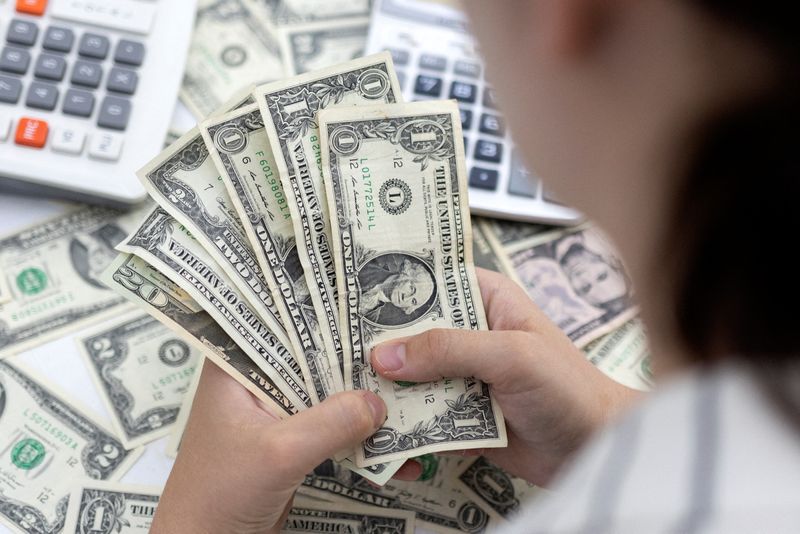By Stefano Rebaudo
(Reuters) -The dollar rose ahead of key U.S. economic data on Wednesday, with investors also waiting for a monetary policy meeting in Canada that could set off a rate cutting cycle.
Investors are looking out for U.S. services data on Wednesday, and more job figures later in the week.
The greenback has languished at an almost two-month low as signs of a softening U.S. economy on Monday boosted the case for earlier Federal Reserve interest rate cuts.
The Bank of Canada gathers a day ahead of a European Central Bank meeting on Thursday.
Canada's annual inflation rate slowed to a three-year low of 2.7% in April, prompting money markets to see an increased chance of an interest rate cut this month.
Markets price about an 80% chance of a Canadian rate cut on Wednesday and discount 65 basis points (bps) of policy easing by year-end.
"We think the Bank of Canada is overdue, and a dovish pivot will have a read-across among smaller G10 countries, such as New Zealand," said Themos Fiotakis, global head of forex strategy at Barclays (LON:BARC).
The Canadian dollar hugged the middle of a months-long range at C$1.3683 per dollar.
The U.S. dollar index rose 0.19% to 104.36. It hit 103.99 on Tuesday, its lowest level since April 9.
"The main point is that markets are pricing the Fed to cut rates almost as much as the ECB," Barclays' Fiotakis said.
"The divergence in the fundamentals is not priced. However, the growth and inflation dynamics will make the Fed much less dovish than other central banks," he added, arguing he sees an opportunity for investors to go long dollars.
Markets were also closely watching Brent crude futures, which hovered near four-month lows on Wednesday.
"If low oil prices cause disinflation to become a global phenomenon again, we wouldn't expect more policy divergence, nor a weaker dollar, as this would trigger 'dovishness' everywhere," said Thierry Wizman, global forex strategist at Macquarie.
The euro was down 0.1% at 1.086 versus the greenback.
Analysts take for granted a 25 bps ECB rate cut this week, but are uncertain about the rate outlook.
The yen slipped about 0.8% to 155.90 per dollar, retracing more than Tuesday's gains that were driven by investors unwinding bets in emerging markets.
Japanese real wages fell for a 25th straight month in April as inflation outpaces nominal pay rises.
On Tuesday, Bank of Japan Deputy Governor Ryozo Himino said the central bank must be "very vigilant" to the impact the currency's weakness could have on the economy and inflation.
Investors see the BOJ tightening its policy in the future, though not enough to strengthen the yen.
The Australian and New Zealand dollars were roughly unchanged after domestic economic news proved less dire than investors had feared.
Emerging markets stabilised after a turbulent few days.
The Mexican peso steadied after dropping about 4% against the dollar and nearly 6% against the yen since the ruling left-wing Morena party was re-elected and, in coalition, within reach of two-thirds majorities in both Congress chambers.
Some analysts said expectations for greater government control over the economy weighed on the Mexican currency.
"President-elect Sheinbaum has signalled responsible fiscal policies and central bank autonomy," Macquarie's Wizman said, arguing that the selloff on Mexican assets looked overdone.

"The dust may settle soon, leading to a period of outperformance for the Mexican peso," he added.
India's rupee recovered from a seven-week low hit as election results showed voters had returned Narendra Modi to power by a much slimmer margin than expected.